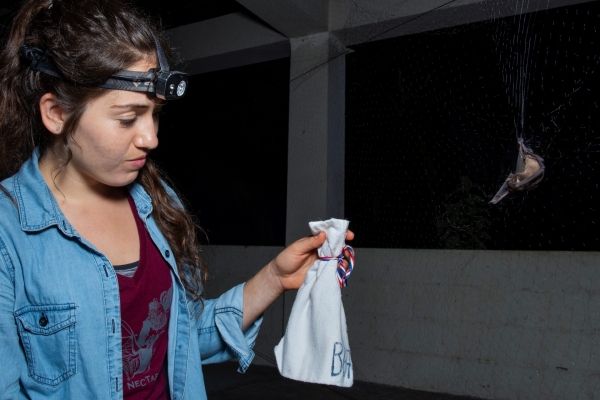Searching for food at night can be tricky. To find prey in the dark, bats use echolocation, their “sixth sense.” But to find food faster, some species, like Molossus molossus, may search within hearittng distance of their echolocating group members, sharing information about where food patches are located. Social information encoded in their echolocation calls may facilitate this foraging strategy, according to a recent study by Smithsonian Tropical Research Institute (STRI) scientists and collaborating institutions published online in Behavioral Ecology.
Previous research has identified several ways in which echolocation can transfer social information in bats. For example, “feeding buzzes,” the echolocation calls bats produce to home in on prey they’ve spotted, can serve as cues of prey presence to nearby eavesdropping bats. On the other hand, echolocation calls that bats produce while looking for food, called “search-phase” calls, were not known to transfer social information.
However, for group-foraging bats, coordinating flight in the dark with several other fast-flying individuals may require an ability to identify group members on the wing. If search-phase calls contain individual signatures the bats can perceive, it could allow them to know which individuals are flying near them without requiring specialized signals for communication.
Read more at Smithsonian Tropical Research Institute
Photo: Jenna Kohles, STRI fellow and doctoral candidate at the Max Planck Institute of Animal Behavior in Germany, led a research team that tested whether search-phase echolocation calls contain information about a bat’s identity. Photo Credit: Smithsonian Tropical Research Institute


